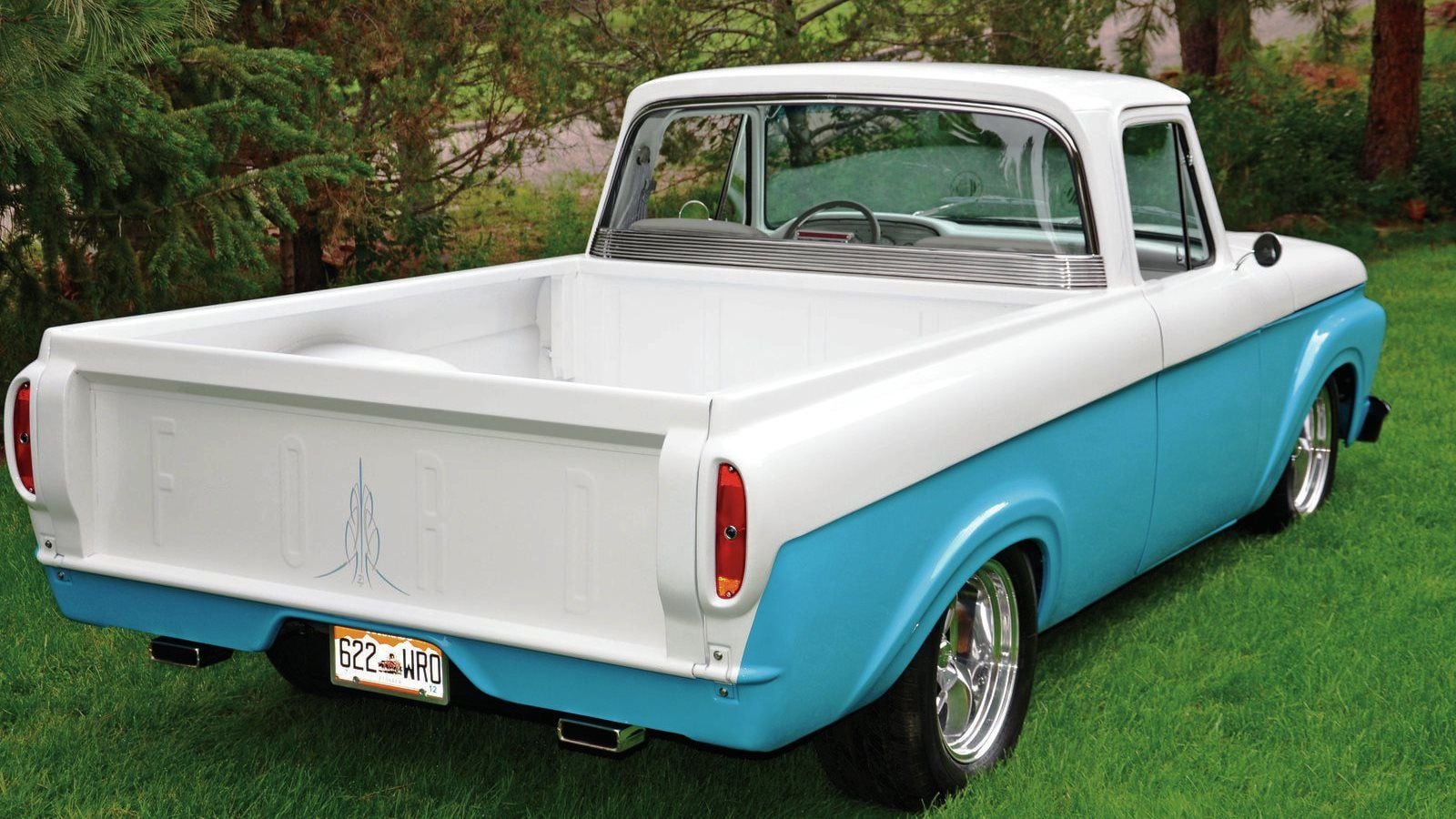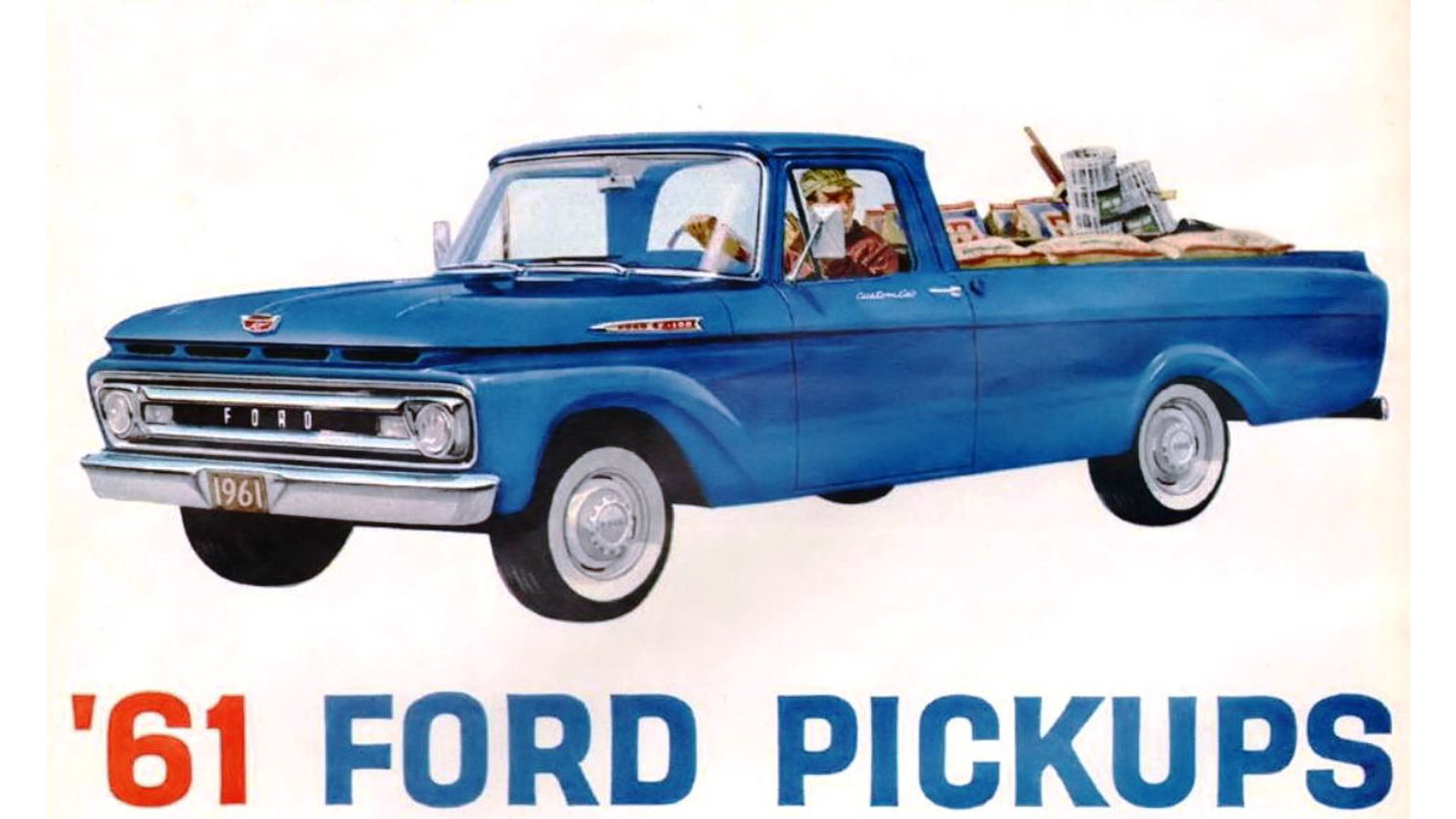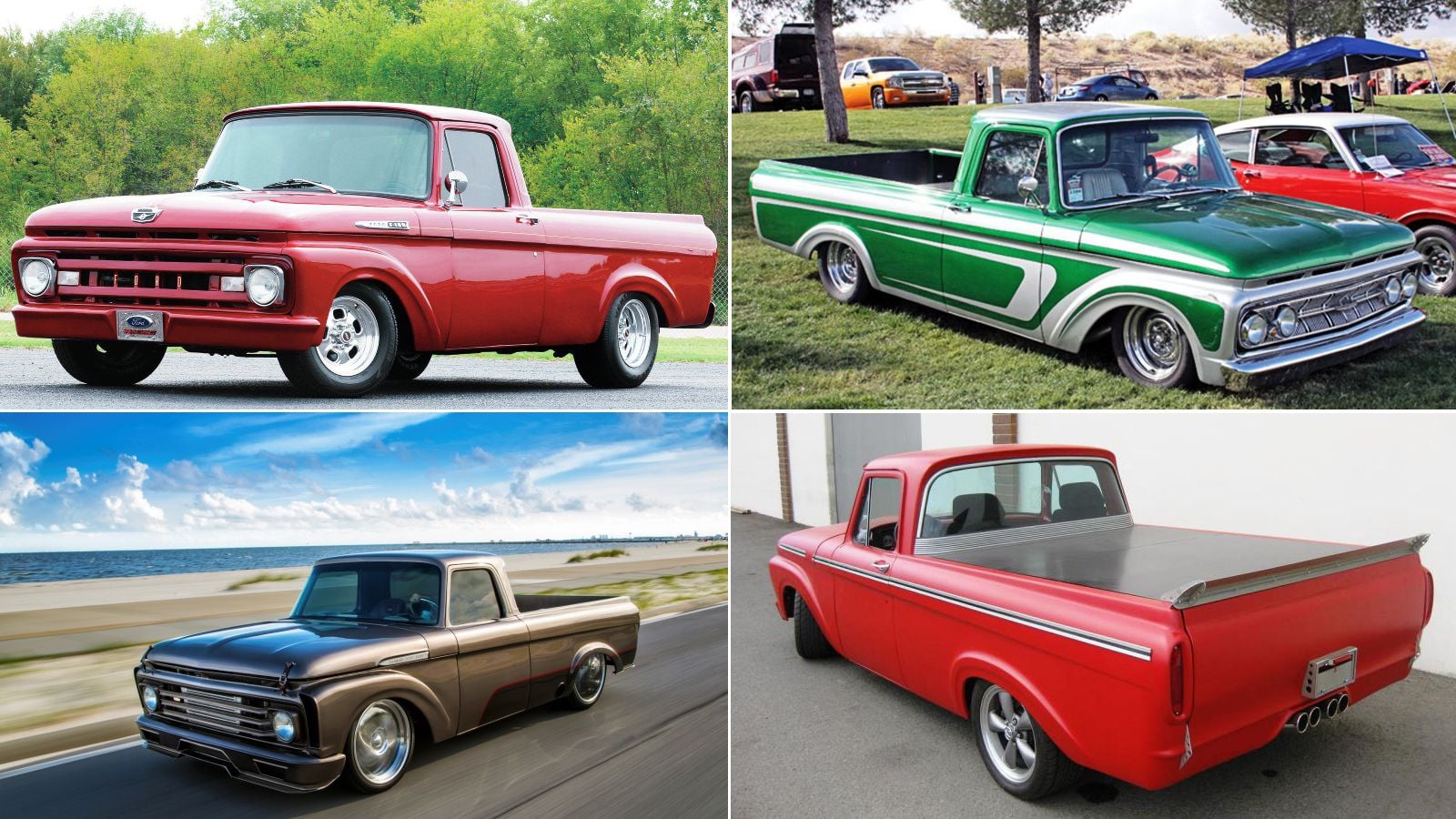8 Facts You Didn't Know about the 61-63 Ford Unibody Trucks
Ford swung for the fences with the new 4th generation F-series truck design introduced in 1961 with a modern integrated cab and bed design that was unique on the market. Read on and we'll explore the good and bad of these before their time trucks.
















1. Fabulous Failure
By the time the 1961 trucks came out, Ford had been making car based Rancheros for 4 years (over 2 generations) and they knew how to integrate the cab and bed of a pickup truck for a more car-like experience. The 1961 trucks were designed with the bed sides welded directly to the cab, with no gap between cab and bed, and just the rear of the cab acting as the front of the bed. All 2-wheel drive F100 and F250 trucks had the integrated bed, unless the older flair side bed was optioned, while 4x4 trucks came standard with the flare side bed. It was a style which lasted just a few years, before the separate cab and bed came back and stayed until the present day.
>>Join the conversation about the Ford Unibody Trucks right here in the Ford Truck Forum!
2. Not Really a Unibody
These days folks refer to the 1961-63 Ford trucks with the integrated bed as "unibody trucks" but that is a misnomer. A unibody vehicle does not have a separate frame, and the body is self supporting, like most cars today. Ford had started experimenting with this construction technique with the 1958 Thunderbird, and the 1961 Econoline series also featured true unibody construction. Under every "integrated pickup," as Ford called these trucks, was a traditional ladder frame that was just as stout as the previous generation, if not more so. The only real unibody pickups in recent memory were the VW Rabbit pickup, Subaru BRAT, and Plymouth Scamp/Dodge Rampage. Every generation of El Camino and Ranchero still had a ladder frame under it.
>>Join the conversation about the Ford Unibody Trucks right here in the Ford Truck Forum!
3. Bet the Farm on the New Design
When these trucks first were introduced, Ford had so much faith in the new design they didn't even bother to design an alternative. You could have the sleek new integrated styleside, or you could have the agricultural flareside. They had not bothered to design or produce tooling to make the new styleside bed separate from the cab. If you wanted a 4x4 with the more modern flat sided bed, and later in 1962 when a separate bed became available on 4x2 models, you were stuck with the 1960 style bed which did not match up to the cab. You may have seen oddly mismatched '61, '62, or '63 trucks like the one in the above picture, but that is how they came from the factory until 1964.
>>Join the conversation about the Ford Unibody Trucks right here in the Ford Truck Forum!
4. Short Beds and Long Beds
Ford was not fooling around. They had enough faith in this design to make both short and long beds, and F250 with an integrated bed as well. There is no denying how great these trucks look, midway between an Ranchero and the previous F100 design. There is also no denying that the integrated design and new interior insulation, sound deadening, and seat added up to a very car like ride. But only when it was empty, fill it up with 1,000 lbs of gravel and the shortcomings started to become apparent.
>>Join the conversation about the Ford Unibody Trucks right here in the Ford Truck Forum!
5. Not Strong Enough for 4x4
From the start, the engineering team didn't think the integrated bed was strong enough for the punishing roads a 4x4 would see, so it was not offered. Ford had only started making an in-house 4x4 truck in 1959, and it was only a small part of the market back then, so only having the old bed design or the step side was not seen as a sales handicap. As is often the case, the engineers were right and the sales and styling department were wrong, and it became obvious almost immediately when the truck went into service.
>>Join the conversation about the Ford Unibody Trucks right here in the Ford Truck Forum!
6. Cost Cutting
Why did Ford not develop an alternative option to the integrated bed/cab? Cost cutting. Besides the sleek look, and the improved car-like comfort, welding the bed to the cab was less expensive. Several body stamping could be eliminated by making the rear of the cab and the front of the bed one piece. With no gap between them, the cab and bed could be mated before the truck got to the paint shop, which sped up production. With the bed side stamping welded to the cab at the door cut line, there was less finishing that had to be done everywhere before paint. To the product planners, the integrated design was win-win.
>>Join the conversation about the Ford Unibody Trucks right here in the Ford Truck Forum!
7. Flexible Flyer
Soon after hitting the market, customers started having issues with their trucks. People who used the new unibody design trucks for real work, like the man in the ad above, soon noticed a load in the bed would effect the function of the cab doors. The ladder frame was strong enough to carry 1,000 lbs, or 1,500 lbs in the F250, but not without flexing, which wasn't an issue when the bed and cab could twist separately. Now that everything was welded together, driving a rough road with a load on could cause the doors to pop open. Sometimes after loading (or overloading according to some people) the truck driver would find he couldn't open the door because of the flexing frame. Obviously, these were serious issues, because back then trucks were about working first and looking good second. By mid 1962 Ford had moved to selling the earlier 1960 style bed on all truck, 2 or 4-wheel drive, and by mid 1963 the integrated style bed was no longer even an option.
>>Join the conversation about the Ford Unibody Trucks right here in the Ford Truck Forum!
8. One of the Best Starting Points
If your truck project falls more into the on road category, the 1961-63 "unibody" style trucks are simply the best starting point. Whether you are building a muscle truck, a gasser, a lowrider, a custom, a drag racer, or anything else, the smooth car like lines of these trucks give them a head start in the looks department. The ladder frame is so simple you can graft almost any front suspension to it, or build a whole new frame from scratch. The red truck in the lower right of the picture has been dropped onto a Ford Panther chassis from a 2004 Mercury Marauder, which has nearly the same wheelbase. The engine compartment can swallow any power plant you wise, like the Cummins diesel in the grey truck on the lower left.
>>Join the conversation about the Ford Unibody Trucks right here in the Ford Truck Forum!
If you have a Ford truck project you need help with, check out the how to section at Ford-Trucks.com, as well as the helpful forum archives.
